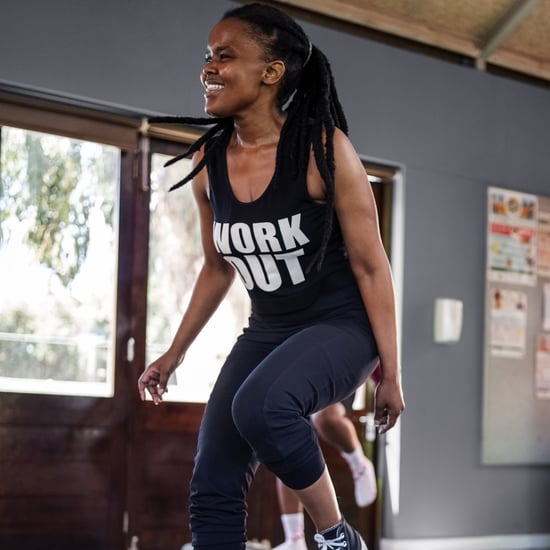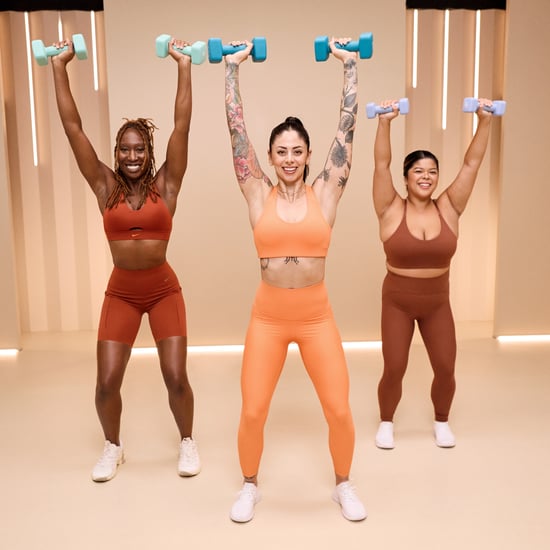How to Do Squats
Learn How to Do a Squat With Proper Form to Maximise Your Glute Strength
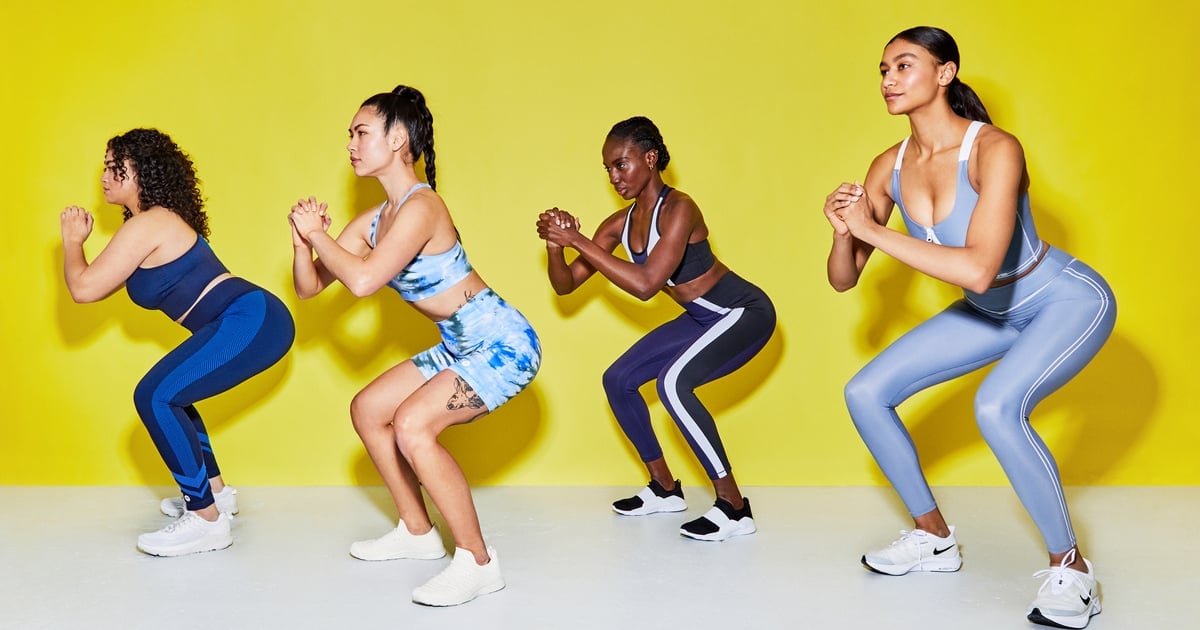
Squats are one of the most effective exercises you can do to strengthen your lower body. It's important that you know how to do squats with proper form to prevent injury and for maximise effectiveness. Here is everything you need to know about what muscles squats work, the benefits of squats (it's not just about your booty!), how to do basic bodyweight squats (including where to place your feet and how far to lower your hips), and how to make them harder by doing different types of squat variations.
We love that you can do bodyweight squats anywhere — even while brushing your teeth. And you can make squats harder by adding dumbbells or other weights, or doing variations that also work multiple body parts like squats with bicep curls. If you're new to strength training, bodyweight squat variations are perfect for beginners. As you get more comfortable with squats, do the variations listed below to get even stronger.
What Muscles Do Squats Work?
Whether you do bodyweight squats or squats with dumbbells, kettlebells, or a barbell, this is a lower-body exercise that targets the glutes, hamstrings, and quads. You'll also strengthen your core, and if you combine squats with an upper-body exercise, you'll strengthen your shoulders, arms, and upper back at the same time.
Benefits of Squats
One major benefit of doing squats is that this move strengthens your lower-body muscles which will help you in all fitness activities such as running, cycling, dancing, hiking, skiing — everything! A squat is also a natural movement humans do every day, so practicing squats will make it easier when you need to squat down to pick something off the floor, helping to prevent knee pain or pulling your back out.
Many people also do this type of exercise for aesthetic purposes, to make their butt look bigger. To really grow your glutes, couple weighted squats with other glute-building exercises like deadlift variations, walking lunges, and glute bridge variations.
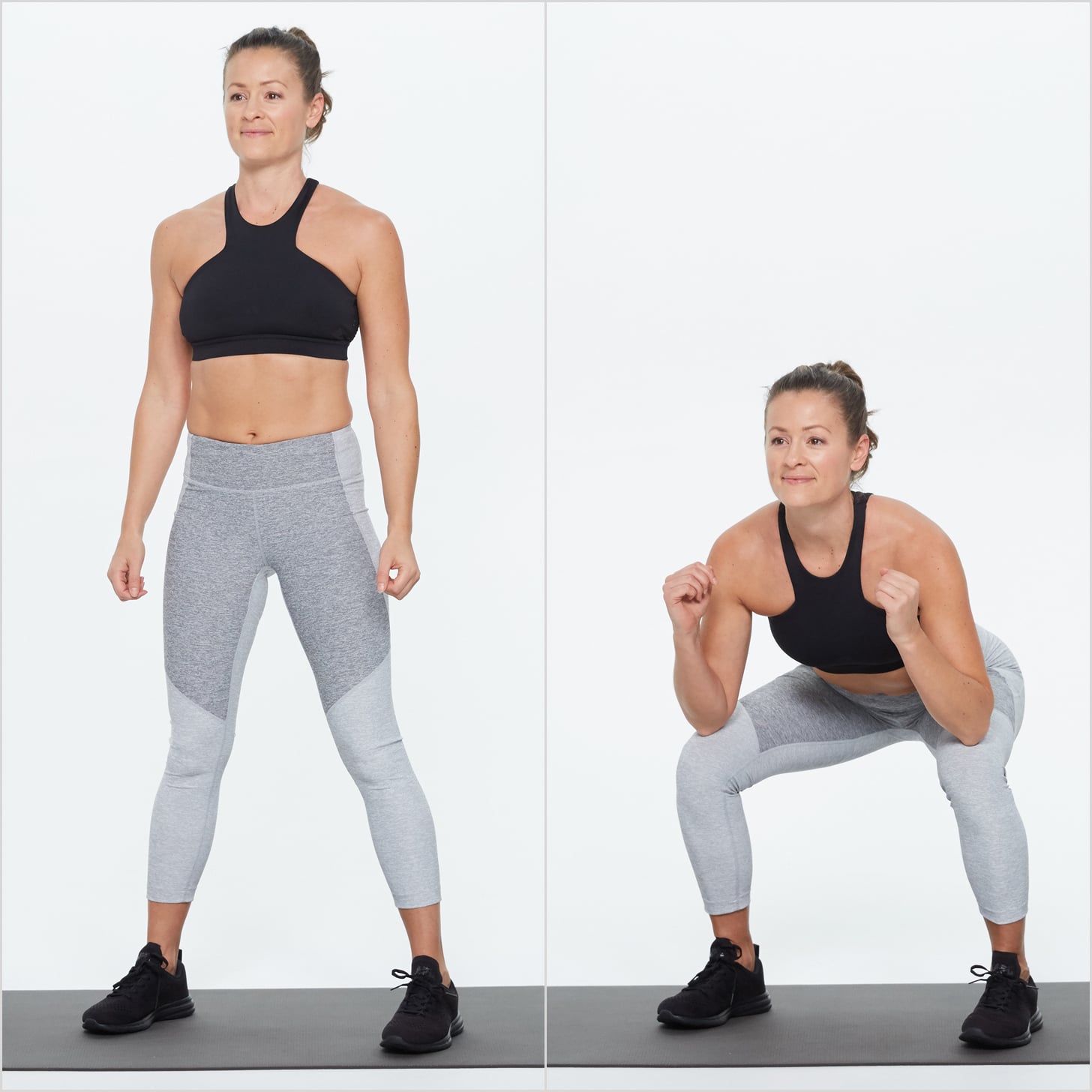
How to Do a Basic Bodyweight Squat
Here's a primer on how to do the perfect bodyweight squat. Avoid these form mistakes to increase effectiveness.
- Stand with your feet shoulder-width apart or slightly wider. Extend your hands straight out in front of you to help keep your balance. You can also hold your hands at chest level or place them behind your head.
- Bend at your knees and hips, sticking your butt out like you're sitting into an imaginary chair. Keep your chest lifted and your spine neutral, and protect your lower back by do not rounding your spine.
- Keep your head and chest lifted to prevent your spine from rounding. Lower your hips so your knees are over your ankles. Make sure to keep your weight back into your heels to avoid too much pressure on the knees.
- Keep your body tight, and push through your heels, focusing on using your glutes to bring yourself back to the starting position in order to reduce strain on your lower back. This counts as one rep.
Start with three sets of 10 squats, and then add more reps (12, 15) as you get used to the motion. Focus on your form, and then worry about progressing.
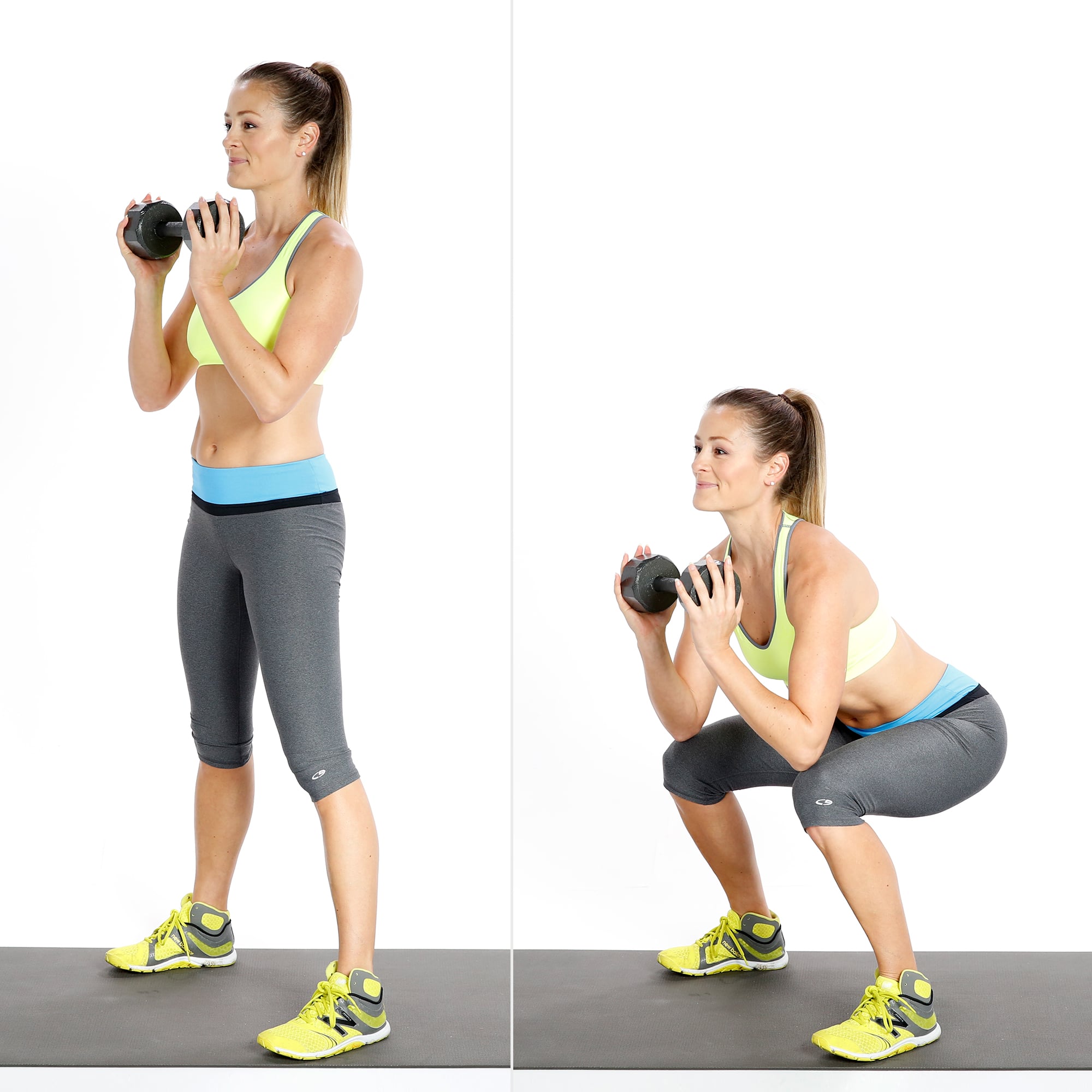
How to Do Squats With Weights
To add intensity to the basic squat, follow the instructions above, but add weights. Here are some options:
- Hold dumbbells or kettlebells by your sides
- Hold a kettlebell at your chest
- Hold a barbell or dumbbells on your shoulders
- Hold dumbbells, kettlebells, a barbell, a medicine ball, or a weight plate above your head
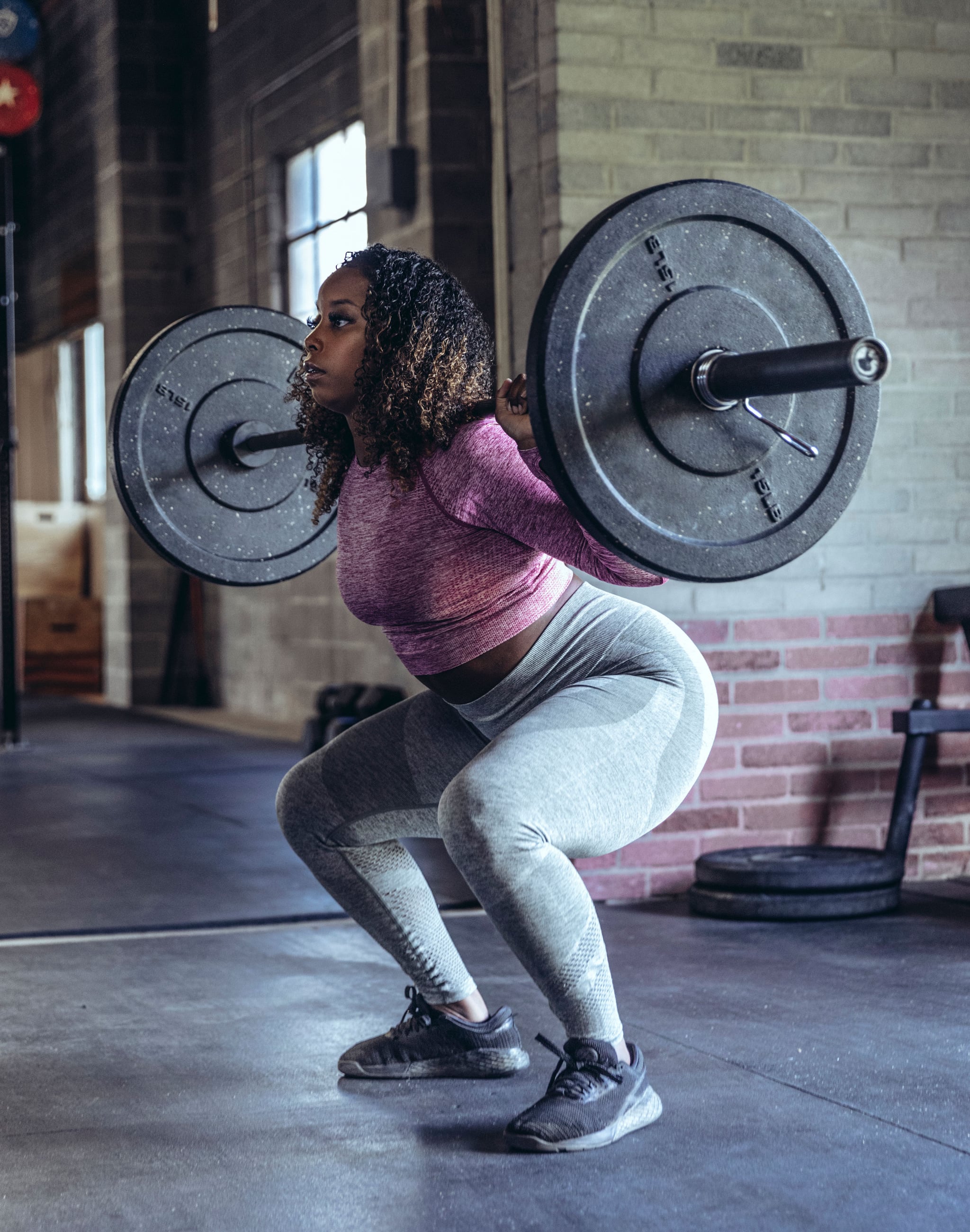
Types of Squat Variations
After mastering the basic squat, try these squat variations:
- Squat with side kick
- Narrow squat with back kick
- Dumbbell thrusters
- Barbell squat
- Goblet squat
- Dumbbell squat
- Jump squat
- Medicine ball squat clean
- Sumo squat
- Single-leg squat
- Deep squat with weights
- 60-minute power hour EMOM workout
- 25-minute bodyweight workout
- 15-minute basic dumbbell workout
- 45-minute dumbbell strength workout
- 5-minute squat workout for a tight booty: see video below
Workouts With Squats
Here re a few workouts you can try that include bodyweight and weighted squats:




